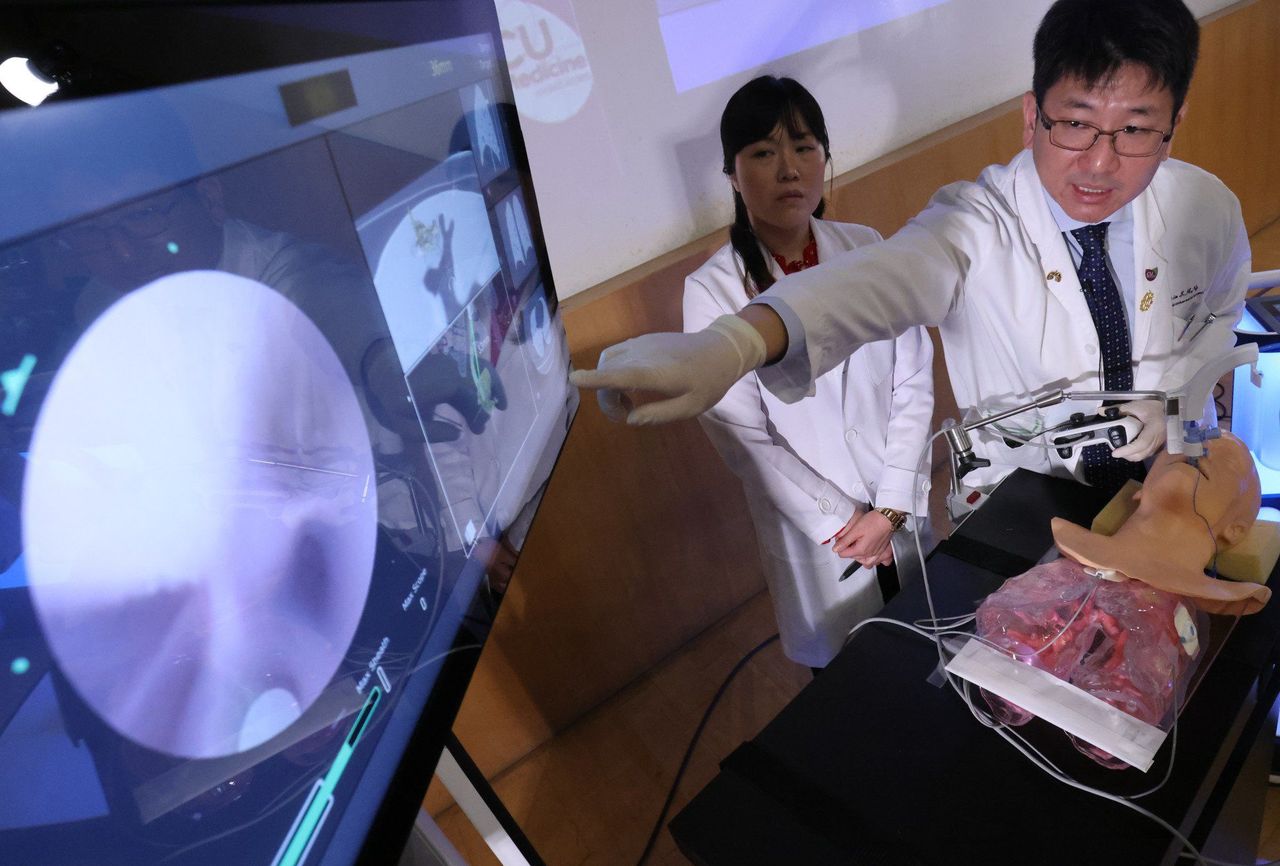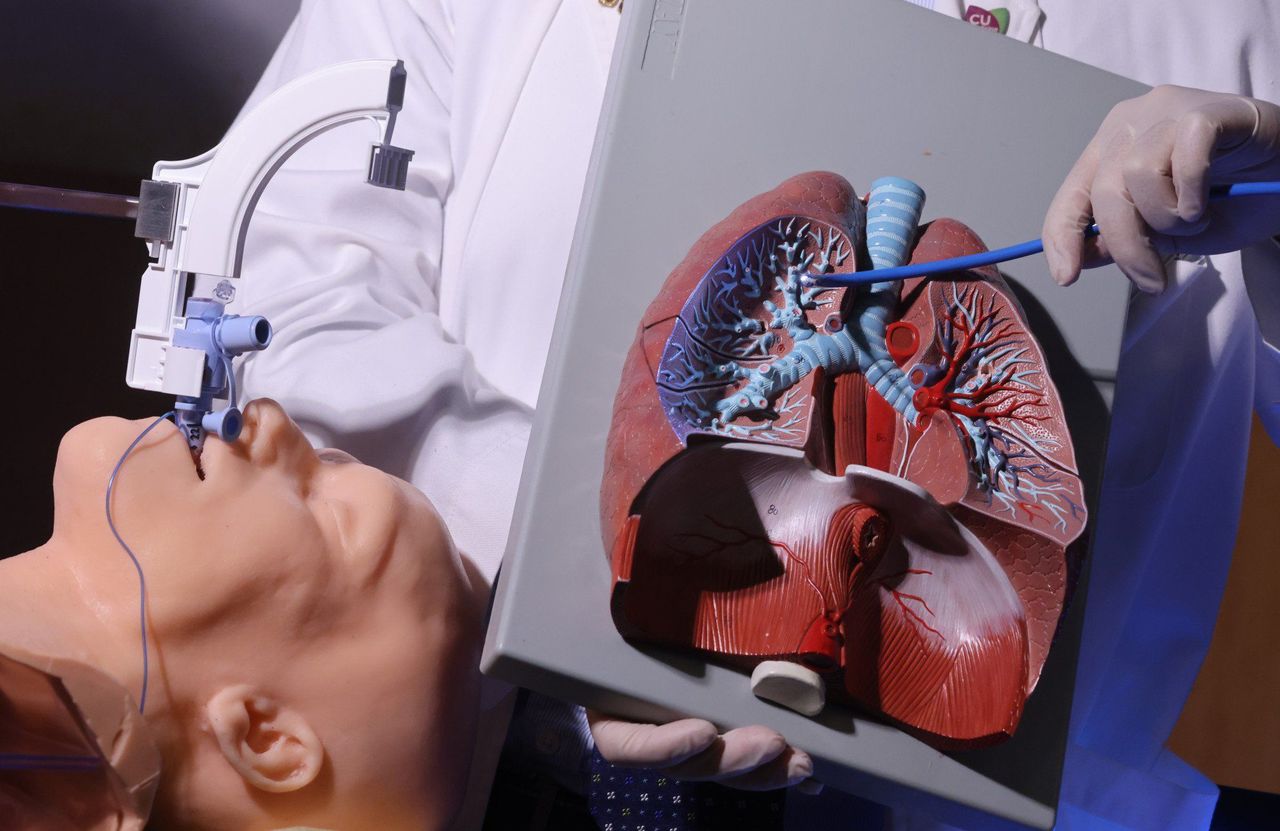Hong Kong News

Hong Kong doctors perform world-first cancer surgery using robot and microwaves
Doctors from a Hong Kong university have carried out the world’s first surgical procedure combining a robot and microwaves to remove tumours that had spread to a cancer patient’s lungs, reducing the harm traditional operations could have caused.
The procedure, said to have been conducted for the first time globally by doctors at Chinese University’s teaching hospital, has been used on three patients in the city and is expected to benefit more than 100 locally.
The surgery, which involves inserting a microwave-emitting instrument into a patient’s lungs with the help of a robot, was carried out at Prince of Wales Hospital in Sha Tin.
“This technology, as you see today, really is about accurate navigation using a robotic bronchoscope to go to different lung metastases, [where] we can treat many of them at the same time without puncturing the lungs, without bleeding, without creating complications,” said Professor Calvin Ng Sze-hang from Chinese University.
 Dr Rainbow Lau Wing-hung and Professor Calvin Ng Sze-hang hold a press
conference on the Chinese University of Hong Kong’s new surgical
procedure for cancer patients.
Dr Rainbow Lau Wing-hung and Professor Calvin Ng Sze-hang hold a press
conference on the Chinese University of Hong Kong’s new surgical
procedure for cancer patients.
Metastasis is the spread of cancer cells from one part of the body to another, with the lungs being one of the most commonly affected areas. A bronchoscope is a device used to inspect the inside of a person’s lungs and airways.
According to Ng, who performed the operations, the most common method to treat the condition would be the surgical removal of the tumour. However, this means the patient would be subjected to surgical wounds, blood loss, pain, scarring and an increased recovery time.
They could also face complications through the leakage of air in the lungs, as well as the loss of function and healthy tissue from the organ.
The procedure performed by the university team involves using a robotically controlled bronchoscope to access the airways in a patient’s lungs, where a catheter emitting microwave energy will then be placed. The instrument will heat and destroy the targeted cancer cells.
After this procedure, patients only need a 24-hour hospital stay, compared with the usual two to three days required for a minimally invasive operation.
There would also be little or no pain involved owing to the lack of a surgical wound, with patients also suffering no blood loss.
 The world-first procedure was conducted at Prince of Wales Hospital in Sha Tin.
The world-first procedure was conducted at Prince of Wales Hospital in Sha Tin.
“Patients have gone back to work or their normal life the day after they leave the hospital after the surgery, as they do not have to worry about the wound being infected or strenuous activity affecting it,” Ng said.
Since October 2022, the team has successfully treated six lung metastatic tumours in three patients. Two had colon cancer, while the other had bone cancer.
However, the procedure can only tackle tumours up to the size of about 2.5cm (0.98 inches) and those away from critical areas such as major arteries or the heart.
According to Ng, there are 30 to 40 patients in Prince of Wales Hospital who are suitable for the procedure, with an estimate of over 100 more across the city. However, he noted the hospital could only help 80 to 100 patients.
Prince of Wales Hospital is the only medical facility in Hong Kong with the technology and experience to conduct this procedure.
The procedure is still under clinical trial to further evaluate its effectiveness and safety. The team and its overseas partners hope to recruit up to 145 patients worldwide for the study.
The team also has plans to expand the procedure to cover patients with lung cancer and hopes to begin a study at the end of the year.
In 2020, Hong Kong recorded 34,179 new cases of cancer. The number dropped by 903, or 2.6 per cent, compared with 2019.











